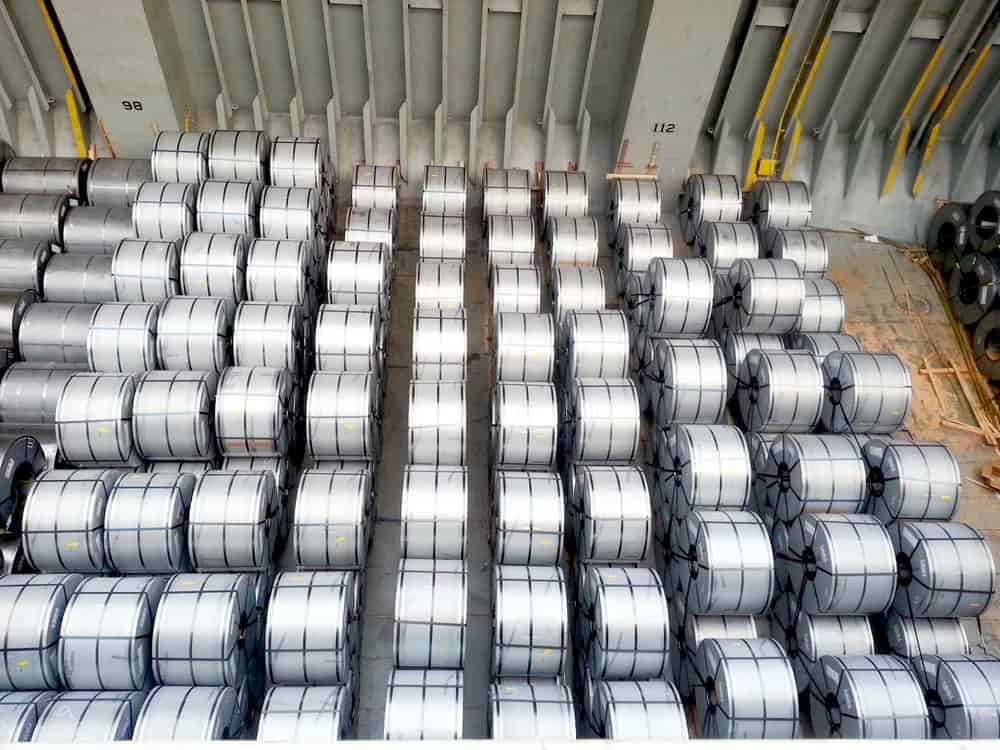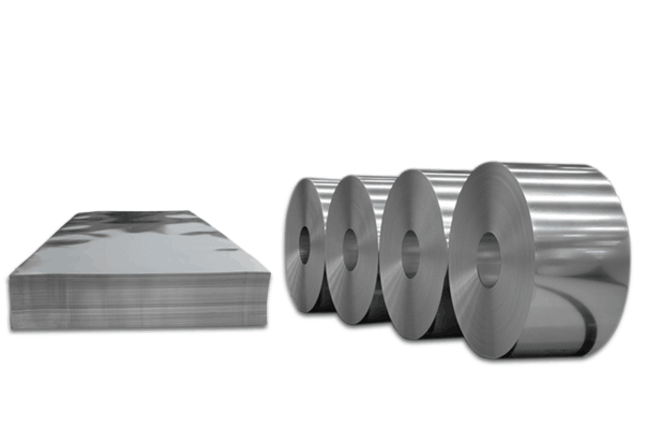STEEL COILS LOADING – ITS CHALLENGES AND WAYS TO OVERCOME
by
Mr. Spiros Malliaroudakis
(Founder & Managing Director, S.A. Malliaroudakis Maritime (UK) Ltd)

The loads derived from steel coils loading are very concentrated, leading to higher stresses in the double bottom than would be expected. Calculation of steel coils loading conditions, which reflect actual loading is essential to maintain the required level of safety.
Loading manuals of many ships used in the steel trade that carry coils, contain limited information:
either
- The Max. Tank Top Strength (MT/m2) for uniform loading which however is not advisable criterion for Steel Coils Loading.
or
- In the cases where there is some information from the Builders in the Loading Manual, this is usually the bare minimum, e.g. Covers only the case of 2 Tiers of 15t coils, supported by 3 rows of dunnage.

Most operators have adopted the following calculation formula of maximum tonnage per hold on the basis of:
[area of tank top (m2) x permissible loading tonnes per m2]
Whilst this is the correct calculation when dealing with homogeneous bulk cargoes, which exert a uniform load on the tanktop, it is incorrect for steel coils because the load, which they exert, is not uniform. The crossing point of the coils and the dunnage will give rise to a point load on the double bottom structure. This loading is very different from the uniform loading and will give rise to higher stresses in the tanktop plating as well as the inner bottom longitudinals.

The dominant regulations are CSR-2010 (Common Structural Rules), which consist of the most common method for such calculation adopted by all IACS Members. Nonetheless, the non-CSR built vessels may be regulated by other Class-specific Rules, which do not consider wastage factor in the relevant calculations.
Generally, Class requirements could be considered conservative, as the spirit of the Class requirement is based on the fact that the calculation depends on the worst relative position of coils to the ship’s floors. In this respect, the actual Loading of Coils on the entire Tank Top Area may or may not reach the maximum stresses, as allowed by the Regulation.

Weight Distribution Example for 1.5 Tier of 15tons Coils
Weight of the top coil is shared equally between the coils lied on Tank Top or 22.5tons Steel Coils Weight
(Average of the Stack)
Concerning the loading of mixed weight / size of coils in each row and/or tier, the involved checks for Steel Coils Loading shall be performed in two levels at first from local strength aspect taking into consideration the Double Bottom Structure & secondly from complete ship loading aspect through specialized Loading Programs covering Longitudinal Strength, Trim, Draughts, Stability, Hold Flooding URS17 etc.) using sophisticated tools with printout, as the one indicated below.
Therefore, provided that the lowest/first tier of Steel Coils is the one that matters in terms of local strength, the Ship Operator usually checks the entire stack of Coils based on the Dimensions of the lowest/first tier Coil (Length & Diameter), using as Coil Weight the average of the stack. Attention should be drawn to the applicable Common Structural Rules that apply officially taking into consideration one type of Coil for the entire .

Specialist software available for pre-stow plan assessment with steel products
used in conjunction with the ship’s loading instrument
In case of multiple types of Coils, it is, usually, sufficient for Ship Operator to randomly check the heaviest/shortest coil to arrive at safe operational day-to-day decisions. Following this check (Local Strength Aspects), the Ship Operator may proceed with the entire Pre-Stow Plan check as General Cargo using the vessel’s approved Loading Program.
When loaded in a ship’s hold, steel coils are placed on dunnage. Dunnage has two functions, to spread the steel’s load uniformly in relation to the ship’s structure and to provide frictional resistance. One inch thick softwood dunnage is often used with steel coils. Dunnage can be a mixture of imperial and metric measurements, with 8 inch by 1 inch planks used with steel coils. 60mm by 80mm is used with steel plate and bars, and 6 inch by 4 inch is used with heavy steel.
Last but not least, compliance with stowage, securing and lashing principles should be, always, assured.
To conclude with, when carrying steel products by sea, it is essential to ensure that neither the steel nor the ship suffers damage. Its weight presents substantial challenges with overstresses, stowage and securing. The ship must be fit with the appropriate tools to check receivability of the cargo and the safety best practices of stowage, securing and lashing plans.



Comments
Post a Comment